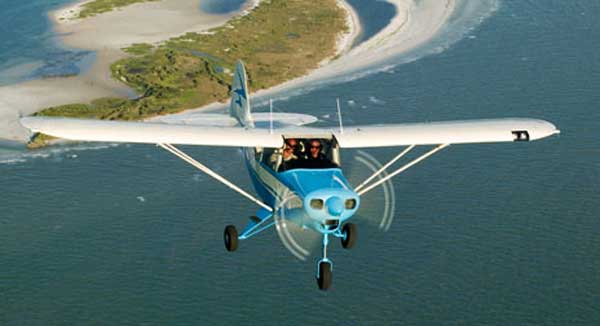


Piper Tri-Pacer - $$4.95
The Pacer was essentially a four-place version of the two-place PA-17 Vagabond light aircraft. It features a steel tube fuselage and an aluminum frame wing, covered with fabric, much like Piper's most famous aircraft, the Cub and Super Cub. An aircraft prized for its ruggedness, spacious cabin, and, for its time, impressive speed, many Pacers continue to fly today. Factory installed 125 hp, 135 hp and 150 hp engine options were available and 160 hp as well as 180 hp engine after-market conversions are an option.
PA-22 Piper Tri-Pacer (Flying Milk stool)
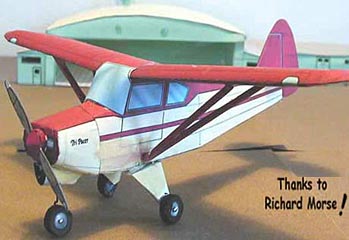
Piper, which had been building the very successful tandem-seat Cub series, decided to add another low-cost item in 1948 and 1949, the fabric-winged PA15 Vagabonds, side-by-side two-seater's. These quickly grew into the four-seat Pacers, with more powerful engines than the Cubs. The much stubbier Pacer wing (about three quarters the total area of the Cub wing) did allow the Pacer to fly about 20 mph faster than the comparable Cub. Because of the lack of lift in the shorter wing, it climbed about two-thirds as fast as the Cub.
In 1951 Piper introduced its Piper PA-22 Tri-Pacer, basically a version of the PA-20 Pacer with tricycle landing gear that incorporated a steerable nose wheel. It also differed from the PA-20 by having initially a 150-hpAvco Lycoming 0-320 flat-four engine, and introduced an interconnected aileron and rudder pedal control system, enabling the Tri-Pacer to be flown entirely by the control column without the need to have an input from the rudder pedals during turns. This system was easily disconnected, however, to permit independent use of the ailerons, elevator and rudder. The Tri-Pacer proved a very popular model.
One of the most successful Piper aircraft of the 1950s, the PA-22 offered new pilots the benefits of tricycle landing gear. When production ended in the early 1960s a total of 7,668 had been built. This figure included a number of a slightly more austere version with the 150-hp engine which were marketed for airport operator and flying club use under the name Piper Caribbean.
Thanks for the halloween goodies, loved the Pipe tri pacer,now building the tail dragger, version any possibility of a super cub or vagabond to keep my other pipers company, trying for the complete family.
Chip, Attached are a couple of not so good pictures of the Tri Pacer I'm just completing Tried to round the nose cowl a bit so will have to match some paint to the red to cover the "white". Made the nose wheel strut from a coated paper clip that I cut the coating from to simulate the shock strut. Same with the main landing gear. You might mention in the next update that the nose strut should be about 9/16" long from the bottom of the cowl scoop to the axle.
That worked out about right for the strut length you have for the main gear shock struts. Enjoyed building the little jewel, as the Tri Pacer is one of my favorites. They do fly well and for their time, competed well in a very competitive market. Take care...and keep those wonderful models coming. Thanks. John
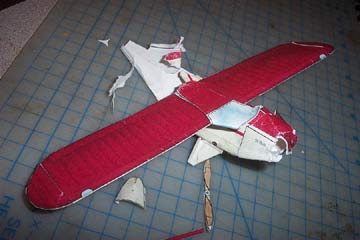 George, our little Westie pup, was having 'issues" and ate my display model... chip |
 |
Piper PA22 Tri-Pacer "Flying Milkstool"
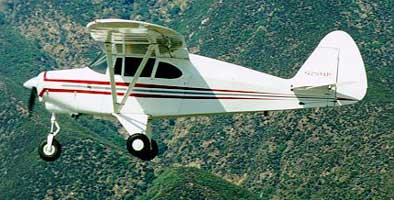 |
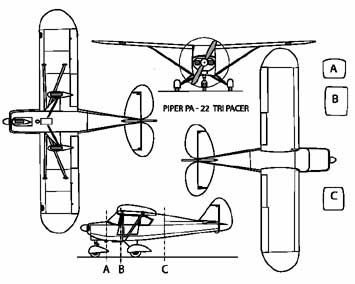 |
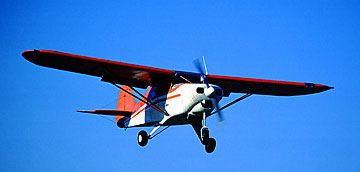 |
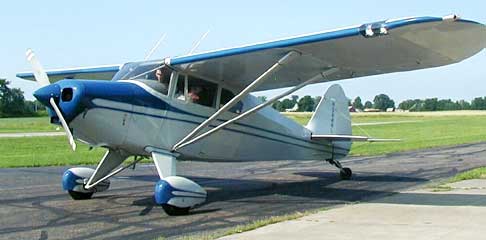 |
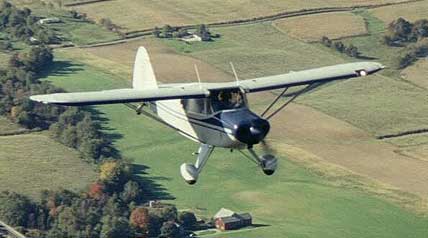 |
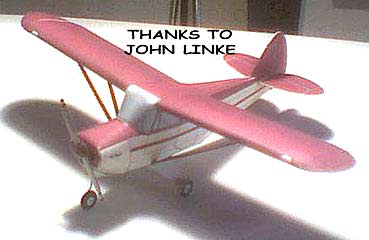 |
Specification Piper PA-22 Tri-Pacer Type: four-seat cabin monoplane Power plant: One 160-hp Avco Lycoming 0-320-B flat-four piston engine Cruising speed: 130 mph Performance: maximum speed 141 mph Service ceiling 16,500 ft - Range with max fuel 655 miles Weights: empty (1,110 lb, Maximum take-off 2,000 lb Dimensions: Span 29 ft 31/4 in; Length 20 ft 71/4 in, Height 8 ft 4 in; Wing area:147.50 sq ft |
Piper PA20 Pacer, PA22 Tri-Pacer, PA15 Vagabond
Length: 20'4" -Wingspan: 29'4"
A set of braced big-wing singles with two struts to wing (compare similar Cessna's, with a single brace). Wings similar in shape, but much stubbier than on the Piper Cub and Super Cub. The Tri Pacer also shows a large air scoop over the nose gear.
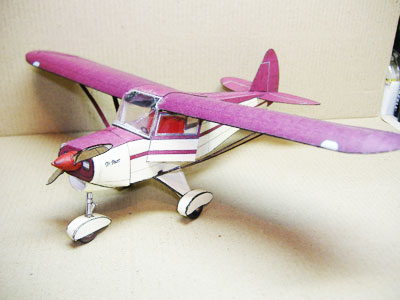 |
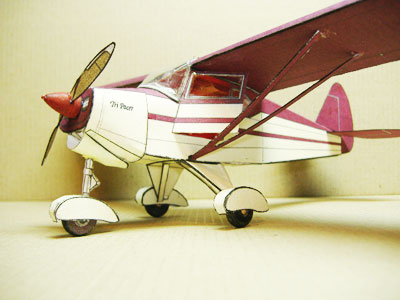 |
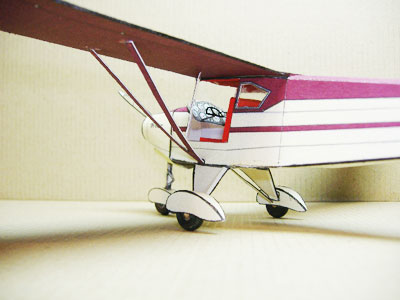 |
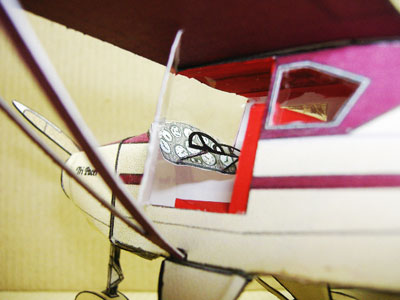 |
These images of a clear cabin Piper Tri-Pacer were sent in by Bob Martin. Thanks Bob!
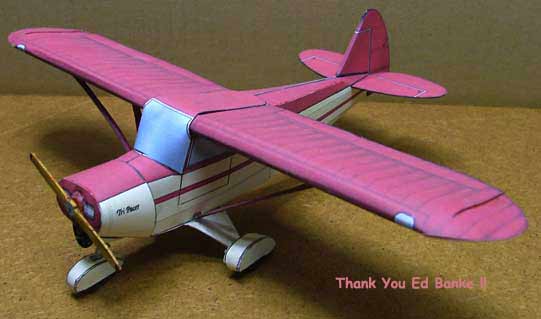 |



